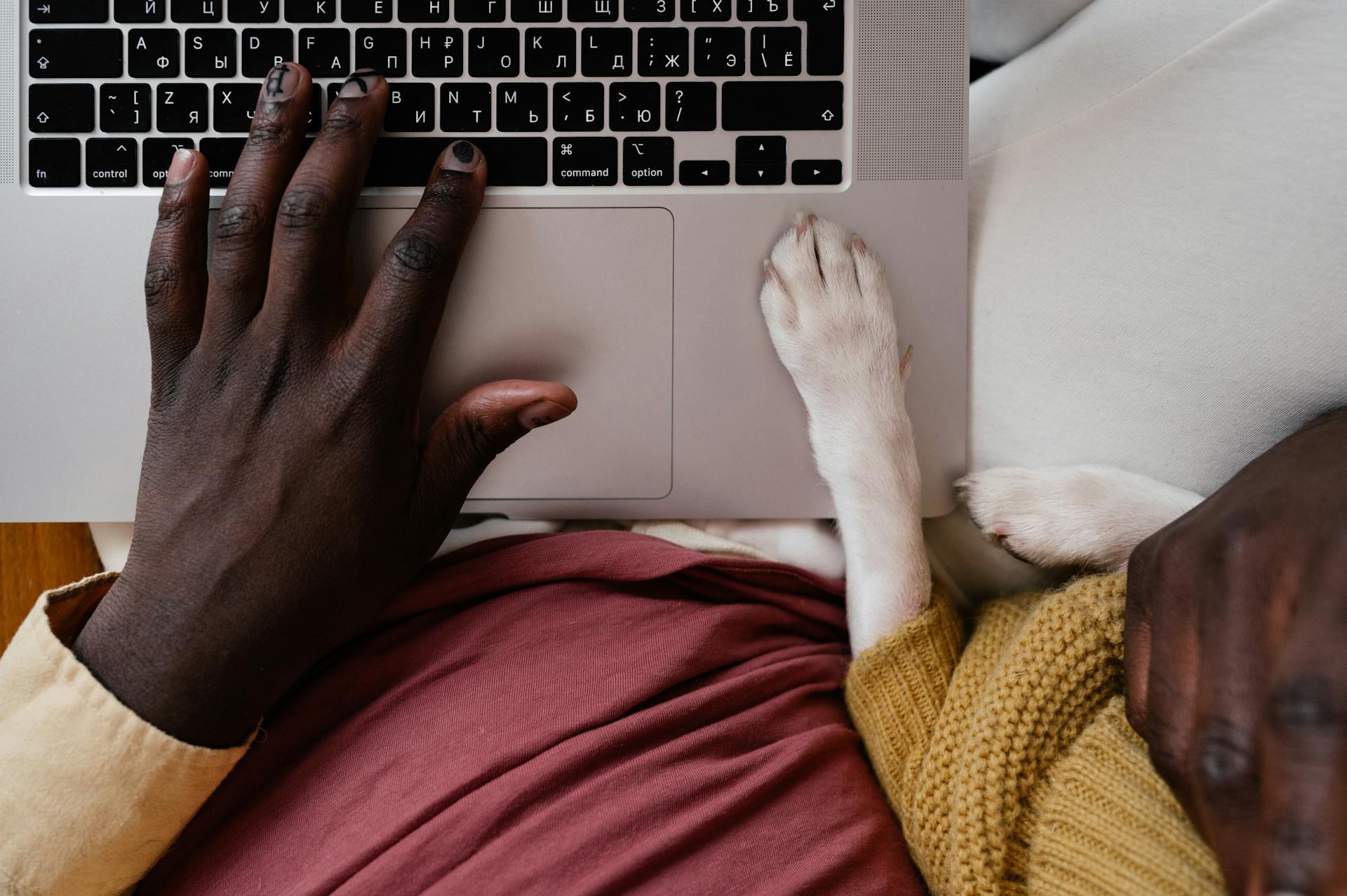
Introducing two male dogs to each other requires patience and careful planning to ensure a harmonious household. Start by preparing a neutral area where the dogs can meet without feeling territorial or resource-guarding.
Before bringing the dogs together, make sure they have separate spaces with all the necessities, such as food, water, and comfortable bedding. This will help prevent resource competition and reduce stress.
Begin by allowing the dogs to sniff each other through a barrier, such as a baby gate or a screen door, to allow them to become familiar with each other's scents. This can help reduce anxiety and aggression.
Before the Introduction
Before bringing the new dog home, do outdoor introductions to give them a chance to sniff and get familiar with each other's scents. This can help reduce stress and anxiety when they meet in the house.
Leaving the leashes on during the outdoor introduction can give you control over both dogs if needed, which is especially important during the initial meeting.
Additional reading: What Kind of Pain Medicine Can You Give a Dog
It's essential to remove any bones, toys, and food bowls that your resident dog might feel the need to protect from the new dog. This will help prevent any territorial behavior and make the introduction smoother.
Keep the dogs separated while you are gone until they are comfortable with each other under a variety of circumstances, even if it's just for short periods of time.
Some posturing and mild aggression can be normal as dogs become more comfortable with each other, even after a successful first few days or weeks.
Proper Introduction Techniques
To introduce two male dogs properly, it's essential to create a neutral environment where they can feel comfortable and relaxed. This means avoiding their homes and territories, especially if they're not familiar with each other.
Dogs on-leash can feel trapped, so it's best to introduce them off-leash if possible. If leashes are necessary, keep them loose to allow the dogs to move freely. Dropping the leashes is also an option, but it's crucial to supervise their interaction closely.
Discover more: How to Introduce Yourself to a Dog?
The first introduction should be a calm and relaxed affair, with both dogs sniffing each other while leashed. This allows them to become familiar with each other's presence without feeling threatened. A good way to start is by taking both dogs on a walk, allowing them to sniff each other while keeping some space between them.
Here are some tips to keep in mind during the introduction:
- Keep the leashes loose to allow the dogs to move freely.
- Supervise their interaction closely, especially during the first few meetings.
- Start with a calm and relaxed atmosphere, and avoid forcing the dogs to interact if they're not comfortable.
By following these tips, you can create a positive and relaxed atmosphere for the introduction, setting the stage for a harmonious relationship between the two dogs.
Proper Introductions
Proper introductions are key to a harmonious household. Introducing dogs to each other off-leash is ideal, but if that's not possible, keeping the leashes loose is the next best thing.
Dogs can get along just fine even if they're different breeds with different personalities. A lazy dog and a hyper dog can actually complement each other, with the lazy dog getting some exercise and the hyper dog getting some calm time.
Consider reading: How to Calm a Hyper Dog with Herbs? Natural Solutions for Pups

You can introduce dogs to each other quickly by taking them to a dog park, where they can interact freely. If you want to introduce them to a specific dog, a walk is a great way to get them acquainted.
To speed up the introduction process, follow these steps:
- Put each pet on a loose leash to avoid anxiety or fear.
- Walk the canines in a straight line, allowing them to sniff each other.
- Walk them side by side with some space between them, allowing them to become comfortable with each other.
- Start over if there's any lunging or snapping.
A good dog greeting looks like a calm and relaxed approach, often from the side or along an arc. Sniffing is a big part of the process, and dogs may investigate any area with scents.
Dogs' bodies should be relaxed during a greeting, with their tails moving, ears not pulled back, and jaws relaxed. If the greeting is going well, the dogs will part ways after a short time, typically six to eight seconds.
If you can't do outdoor introductions, follow these tips for a home introduction:
- Do outdoor introductions before bringing the dogs into the house together.
- Leave the leashes on to control the dogs if needed.
- Remove any bones, toys, and food bowls that your resident dog might feel the need to protect.
- Keep the dogs separated while you're gone until they're comfortable with each other.
- Supervise their interactions and give them breaks from each other.
- Separate the dogs if an altercation occurs, and give them a few days to calm down before trying again.
Introducing Two People
Introducing two people can be a delicate process, but with the right approach, it can be a success. Keep the initial meeting in a neutral location to prevent territorial feelings from arising.

A good idea is to take both individuals on a walk before meeting in a neutral space. This can help them become familiar with each other's presence without feeling threatened.
Don't try to force them to interact if they're not ready. Let them set the pace and respect their boundaries.
If you're introducing someone new to a group, try to keep the group size small at first. This will allow the new person to get to know each other individuals without feeling overwhelmed.
If you're bringing a new person into a social circle, consider keeping them separated with a gate or a buffer when you're not able to supervise. This will help prevent any potential conflicts from arising.
Here are some general tips for introducing two people:
- Keep the initial meeting in a neutral location
- Take both individuals on a walk before meeting in a neutral space
- Let them set the pace and respect their boundaries
- Keep the group size small at first
- Keep them separated with a gate or a buffer when you're not able to supervise
Introduction Process
Introducing two male dogs can be a delicate process, but with the right approach, it can be a success. The key is to make sure the dogs feel comfortable and in control.
Start by introducing the dogs off-leash, if possible, or keep their leashes loose. This allows them to move away from each other if they feel uncomfortable. If you can't do this, drop the leashes to give them more freedom.
If you're introducing the dogs at home, do an outdoor introduction first to help them get used to each other's scents and energy. Leave the leashes on so you can control both dogs if needed.
Here's a step-by-step guide to introducing the dogs at home:
Remember, even if the dogs seem to be getting along, it's normal for them to exhibit some posturing or mild aggression as they become more comfortable with each other.
Introducing Each Other
Introducing each other is a crucial step in the introduction process. A good introduction between a lazy dog and a hyper dog can mean more exercise for one, or less manic energy for the other.
You should always supervise the interaction between the dogs, even if they seem to be getting along. If you don't have a dog park nearby, a walk is a great way to acquaint them with each other.
To speed up the introduction process, try walking the canines in a straight line, one after the other. This allows each animal to sniff the others behind, which is a common way for dogs to identify one another.
If things seem to be going well, you can try walking them side by side with some space between them. Ideally, both dogs will begin to feel comfortable around each other.
However, if there's any lunging or snapping, it's best to start over. And if the dogs repeatedly try to fight each other, professional training might be necessary.
Here's a simple step-by-step guide to help you introduce your dogs to each other:
- Put each pet on a loose leash to avoid causing anxiety or fear.
- Walk the canines in a straight line, one after the other, to allow sniffing and identification.
- Walk them side by side with some space between them to promote comfort and familiarity.
- Start over if there's any lunging or snapping, or seek professional help if necessary.
Introducing a New Dog to Your Household
Introducing a new dog to your household can be a daunting task, but with patience and the right approach, it can be a successful experience for both dogs.
First, consider whether your existing dog wants a sibling. If they have a history of not liking other dogs, it's best to address that first before bringing a new dog into the home.
For more insights, see: How to Introduce Dog to New Person
For a successful introduction, start with walking outdoors on neutral territory where you have plenty of space. Begin by walking on opposite sides of your space, giving treats to each dog when they look at the other. Keep walking until they are no longer focused on each other.
To speed up the process, try walking the dogs in a straight line, one after the other, allowing each animal to sniff the others behind. Once each pet has had a turn in front, walk them side by side with some space between them. If there's any lunging or snapping, start over.
Some common signs of a successful introduction include dogs moving towards each other in a calm and relaxed way, sniffing each other, and touching noses. Their bodies should be relaxed, with loose, wiggly tails and ears that aren't pulled back.
If an altercation occurs, separate the dogs for a few days to give them a break from each other. Stress hormones can take this long to return to normal, and if you try to continue the introduction too soon, the altercations could get worse.
Here's a step-by-step guide to introducing dogs to each other:
1. Start on neutral territory where you have plenty of space, like a park, open field, or quiet street.
Intriguing read: Walking 2 Dogs
2. Walk the dogs on opposite sides of your space, giving treats to each dog when they look at the other.
3. Repeat the walk, moving about 3-5 feet closer each time, until the dogs can walk together without obsessing over each other.
4. Once you're consistently walking well, allow the dogs to circle and sniff each other for a few seconds, then lead them away.
5. Repeat this process several times, leading the dogs away whenever their bodies go still.
Remember, every dog is different, and some may take longer than others to become comfortable with each other. Be patient, stay calm, and reward good behavior to ensure a smooth and successful introduction.
Here's an interesting read: Reservation Dog Season 3
Sources
- https://www.thewildest.com/dog-behavior/guide-dog-dog-greetings
- https://www.luckydoganimalrescue.org/articles/tips-introducing-new-dog-your-household-pack
- https://www.fearfreehappyhomes.com/size-matters-how-to-safely-introduce-big-and-little-dogs/
- https://www.animalhumanesociety.org/resource/how-successfully-introduce-two-dogs
- https://www.holistapet.com/blogs/dog-care/introducing-canines
Featured Images: pexels.com


